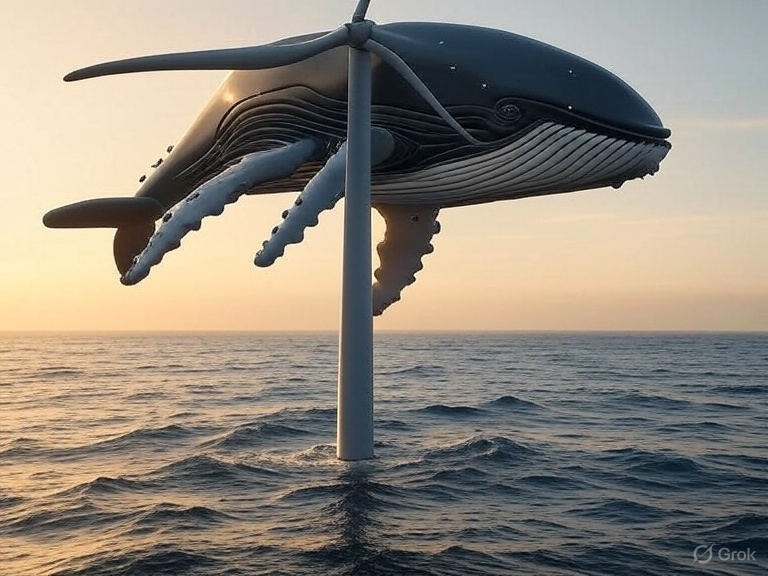What does a humpback whale have in common with a wind turbine? More than you might think. This is a powerful lesson in looking to nature for engineering solutions.
Back in 2004, biologist Frank Fish was looking at a humpback whale sculpture when he noticed something peculiar: the bumpy, uneven leading edges of its flippers. These “tubercles” were the key to the whale’s surprising agility, allowing the massive creature to turn sharply without stalling.
This single observation sparked a brilliant idea: what if we applied this natural design to wind turbine blades?
Partnering with engineers, Fish developed and patented blades with these sinusoidal bumps. The results were remarkable:
- 20% more energy capture in low and turbulent wind.
- Reduced drag and improved lift.
- Quieter operation with less vibration.
This is a perfect example of biomimicry; it’s also a awesome adding to our series innovations created by bisociation —fusing two unrelated fields to create a breakthrough. By blending the hydrodynamics of a whale with the aerodynamics of a turbine, this team created a more reliable and efficient technology for renewable energy.
The design is now being used in industrial fans and hydro turbines globally, helping to make clean energy more widespread.
What other secrets are we overlooking in the natural world that could solve our biggest challenges? I’d love to hear your thoughts!





